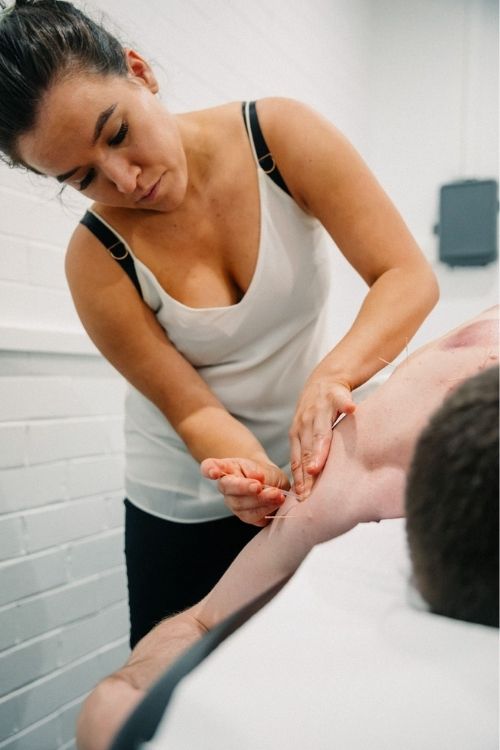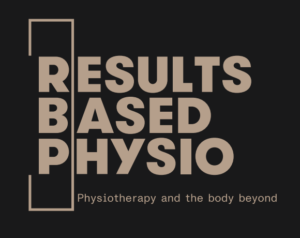Are you facing an injury, chronic pain, or poor physical health? Then you’re probably seeking the best treatment available to you. Two ways to go about treating the body are physiotherapy and osteopathy.
These two modes of treatment may seem similar; however, these two traditions of medicine are very different and could lead to varying results. This is why it’s so important to recognise your injury and your treatment goals, so you can better understand which is right for you.
If you’re ready to learn more about physiotherapy vs. osteopathy and which is right for you, read on!
What is Physiotherapy?
Physiotherapy works in two ways: treating current problems and reducing the risk of future ones. It focuses on improving the movement and function of the body by treating injuries, illnesses, or disabilities. It can also be used to grow stronger and improve overall physicality to avoid injuries and illnesses due to ageing.
Physiotherapy or physical therapy started in the 1800s, but modern practices began to develop and pick up steam towards the start of the 20th century. In response to those suffering from polio, medical professionals realised that performing exercises, moving parts of the body through specific motions, and even using hydrotherapy could help support the body in its recovery process while strengthening muscles and healing joints.
These basic principles continue to this day. Physiotherapy’s techniques focus on building muscle and improving your musculoskeletal condition through movement, massage, and exercises rather than relying on drugs or invasive surgeries.
When to See a Physiotherapist
These are some of the most common ailments that are treated by physiotherapists. A physiotherapist can help if you’re suffering from any of the following:
- Fractures of the foot, ankle, shoulder, or hip
- Bodily aches and pains
- Knee injuries and conditions
- Lymphedema
- Muscular Dystrophy
- Limited range of motion
- Osteoporosis
- Vertigo and headaches
- Carpal Tunnel Syndrome
- Chronic respiratory issues
Physiotherapist Techniques
Physiotherapists use a variety of techniques to treat patients. Because of this, your physical therapy treatment will vary greatly based on what you are looking to treat and what your physiotherapist recommends.
Here’s a look at what techniques are used by physiotherapists:
- Manual therapy — your physiotherapist moving, massaging, and manipulating him/herself
- Exercise — your physical therapist will guide you through exercises focused on a specific area
- Hot and cold — using ice and heat applied to the body
- Ultrasound — to target connective tissue
- Traction — decompression for the spine
- Electrical Stimulation — contracts muscle to restore movement and function
- Laser Treatment — light wavelengths can ease muscle inflammation and pain
What is Osteopathy?
Osteopathy is a treatment that uses manipulation of the body to heal injuries with a particular focus on the spine. Similar to physical therapy, osteopathy uses a hands-on approach to manipulate the body to heal the musculoskeletal system. However, it is by no means the same as physiotherapy.
Osteopathy started in Missouri, USA in the late 1800s as a way of avoiding the common practices of the day. Its philosophy was that the body could heal itself from injury through movement and manipulation performed by someone else.
Osteopathy has developed and changed since its inception, but its core remains. It markets itself as an alternative to traditional medicine, almost as a kind of “alternative”. Osteopathic Medicine places a large amount of importance not only on the body, but also on the “spirit” and mind of the patient.
Osteopaths claim that osteopathy is a holistic approach to healing the body. However, it’s important to note that a patient’s overall health in physical, mental, and social circumstances are taken into account by all medical professionals in the modern era of medicine.
When to See an Osteopath
Here are some of the ailments that osteopaths are commonly used to treating:
- Back pain
- Joint pain
- Neck pain
- Headaches
Osteopath Techniques
Whereas physical therapy uses a wide array of techniques for treatments, osteopaths specialise in manipulation. So no matter your injury, a treatment session will involve the practitioner manipulating your body, joints, and spine. These manipulation techniques include:
- Massage
- Stretching — for stiff joints
- Articulation — guiding joints through their range of motion
- High-velocity thrusts — movements applied to the spine, similar to chiropractic treatments. This will result in a “crack”, “pop”, or sharp sound from your spine.
What’s the Difference Between a Physiotherapist and an Osteopath?
Based on the definitions of physiotherapy vs. osteopathy, you may already have an idea of their differences. But it’s worth noting that they have many differences. This is not only in how they are practised, but their core beliefs and mission.
In medicine, it’s never enough to just perform a treatment. There needs to be a reason behind the actions as well as a clear goal in mind. This may be where physiotherapy vs. osteopathy most noticeably differ.
So what exactly is the difference between physiotherapy vs. osteopathy? Let’s dive in!
Origins and Philosophy
Perhaps the most noticeable difference between physiotherapy vs. osteopathy is the origin and philosophy of these two practices.
As already mentioned, physical therapy developed during the period of time in which polio raged across the world. It then further developed throughout the 1900s with the world wars and global conflicts. Through treating ailing polio victims to injured soldiers, physical therapists learned about the body and how to heal muscles.
In notable studies, physical therapy’s practices are shown to have a great effect on healing injuries and ailments. With such variety in well-studied techniques, it’s easy to see why physical therapists are popular and in demand.
But when it comes to physiotherapy vs. osteopathy, you can see that osteopathy follows a very different path. This practice firmly believes that the body is designed to heal itself. Another core tenet is that the body, mind, and spirit are interconnected.
Because of these origins and philosophies, the practice is limited to physical manipulations. This is unlike physiotherapy which uses light electrical therapy, exercises, and more for treatment. The result is that many are sceptical of the results of osteopathy on healing the body.
Exercises
In addition to its many techniques, physical therapy places special importance on exercise. While you may not have a full-on, intense workout with a physical therapist, you will be guided through different exercises and encouraged to continue these at home.
Studies show the benefits of exercise time and time again. Exercise is almost as essential as eating to maintaining the longevity of the human body. This is one reason that physiotherapy not only heals but also reduces the risk of future injuries and ailments.
So if you are looking for the benefits of exercise in addition to other therapies, keep this in mind when considering physiotherapy vs. osteopathy.
Spinal Manipulation
A key part of osteopathy is spinal manipulation. This is sometimes used in physical therapy but is almost always used for osteopathic treatments.
Spinal manipulation requires a controlled force or thrust to the spine and the back. This is shown to have benefits such as reducing headaches, treating spinal pain, and sciatica. However, it also has its critics.
Spinal manipulation is shown to have adverse effects, especially when applied to the upper spine. Chances are slim with a trained professional, but frequent spinal manipulation with regular treatments could increase the chance of injury to vertebral arteries.
Is a Physiotherapist More Qualified than an Osteopath?
No. Both osteopaths and physiotherapists are equally qualified and trained in the treatment and management of many conditions, which means that neither is inherently “more qualified” than the other. Both have the same foundational studies and then become experts in their field.
However, it is important to note that they are experts in their field, and typically, their field alone. This isn’t to say that a physical therapist can also attend osteopathic courses and cross-specialise and vice versa. But this is not a given.
That means that if you’re looking for a physical therapy approach and mindset for your treatment, an osteopath will most likely not be able to provide what you’re looking for. And the same goes for physiotherapists! It truly comes down to what you’re looking for.
What About Chiropractic and Osteopathy?
So we’ve discussed at length physiotherapy vs. osteopathy. But many who want to learn more about these two treatment options also want to know about chiropractic treatments.
Chiropractic medicine looks very similar to osteopathy in its hands-on approach. However, where osteopaths have some focus on the spine, chiropractors work almost exclusively with the spine. So if your injuries are not directly related to the spine such as back pain or neck pain, a chiropractor most likely cannot help you as well.
Is Osteopathy the Same as Chiropractic Care and Physiotherapy?
Like osteopathy, chiropractic medicine claims that the body can heal itself. That is why the focus is on spinal manipulation through guided motions, massages, and thrusts to the spine. However, it doesn’t share osteopaths’ belief in the body, mind, spirit connectedness.
But chiropractic medicine is also missing the exercises and stretching that you would get from a physical therapist. This is not an overall health approach, and rather a direct treatment of spinal pain.
What about Exercise Physiology?
Many people also wonder about the difference between an Exercise Physiologist (EP) and a Physiotherapist. While both invaluable in a healthcare team, they do serve different purposes and approaches. An EP specialises in the benefits of exercise to help patients get fitter for overall health. They provide exercise interventions and behavioural modification strategies for preventing and managing chronic diseases, injuries, and assisting in restoring one’s optimal physical function.
On the other hand, a Physiotherapist offers treatment oriented around diagnosis and management of movement disorders. Their therapies often entail manual handling, electrotherapy, exercise programs and techniques for improving mobility and strength.
In essence, while both aim towards improving quality of life through physical well-being, their methods and focuses can differ significantly. Therefore, understanding these differences can guide patients in deciding on the right choice of treatment depending on individual needs and circumstances
Which is Better for Me — Physiotherapy vs. Osteopathy?
When it comes to deciding the best practice for you, learn more about your injury. You may also want to speak to your current doctors such as your primary care doctor or current specialist for guidance.
Once you know about your injury you may find that one is far better suited for your treatment based on techniques and focus. But if it isn’t clear that one is better suited than the other, it comes down to personal preference.
You may find that you want the spirit, mind, and body approach of an osteopath. Or you may want the overall health benefits and physical longevity that you get from physiotherapy’s multi-faceted approach.
Conclusion — The Best Treatment for You
When you’re recovering from an injury or illness, you want to find a treatment that not only works now but sets you up for future success. So don’t rashly choose between physiotherapy vs. osteopathy. Each is very different and will give you different benefits.
But with this guide, we know that you can make the best decision for yourself, your body, and your future!



